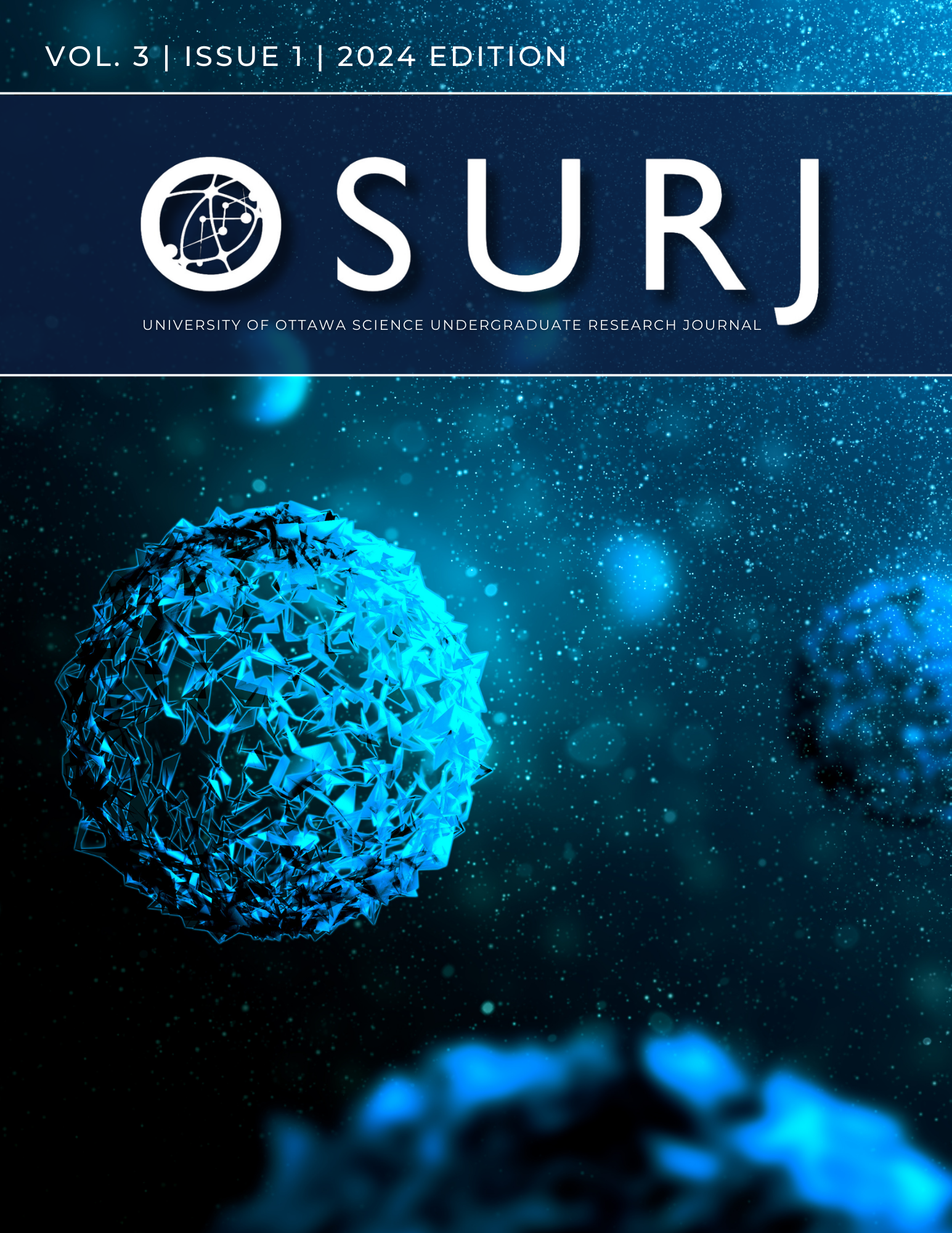The Analysis of eTick Submission in Ontario
DOI:
https://doi.org/10.18192/osurj.v3i1.6989Abstract
Purpose: Ixodes scapularis, also known as the eastern blacklegged tick, is associated with the vector-borne Lyme disease in North America. With climate change, warming temperatures have increased the number of areas suitable for ticks, and contributed to the expansion of tick species in Canada. The purpose of this project was to identify recent trends in tick range expansion and species diversity in Ontario by analyzing 2019 to 2022 data from the web-based tick surveillance platform, eTick.ca.
Method: The eTick.ca web platform allows the public to submit tick photos for identification. We extracted data from the tick submissions for Ontario between mid-2019 to 2022 including information on the type of species, host types, travel history, and location. Microsoft Excel was used to generate distribution tables and graphs of tick submissions by species, month/year and host type for Ontario. Geographic Information Systems (ArcGIS) and SaTScan software were used to identify spatial clusters of tick submissions adjusting for the human population size using Ontario census subdivisions.
Result: A total of 14,611 tick photo submissions were recorded between 2020 to 2022, excluding those with a history of recent travel. The year 2021 had the highest number of submissions (n=7339). Dermacentor species comprised the majority of submissions (n=9498, 65%), followed by I. scapularis (n=4810, 33%) and other species (n=303, 2%) between 2020-2022. Ticks were most commonly discovered on a human host (n=10,084), followed by animal hosts (n=3485), and free in environments (n=1042). Additionally, the majority of species were found in the adult stage (n=12,821, 88%), followed by unknown (n=1539, 10%) and immature stages (n=251, 2%). Clusters of I. scapularis were present in the Eastern, Central, and Southern Ontario regions, while clusters of Dermacentor sp. were present in Southern and Central Ontario regions.
Conclusion: Spatial and temporal variations in tick submissions in Ontario were identified over the 3.5 year period since the implementation of eTick in the province. Data from eTick can be used to identify hotspots of human-tick exposure.
Downloads
Published
Issue
Section
License
OSURJ Publication Rights Policy Agreement Please fill in the following blanks.
I, ____________________ (submitting author) am submitting an article to the University of Ottawa Science Undergraduate Research Journal (OSURJ) entitled _________________________________________________________________________
I. OSURJ Mandate:
The University of Ottawa Science Undergraduate Research Journal is a bilingual multidisciplinary open-access and non-proprietary journal. A journal of this nature embraces all disciplines of science and is the result of a collaborate effort between undergraduate, graduate and faculty members. Our goal is to provide invaluable publishing and submission process experience to undergraduate students and ultimately promote undergraduate research within the UOttawa community.
II. Review Process of OSURJ
OSURJ uses a single-blind review process. The submitted article is first sent to the managing editor who assigns the article to the relevant section editor responsible for the specific science discipline. The section editor provides a preliminary review to confirm that the submission is within OSURJ’s scope after which it is assigned to one undergraduate reviewer and one faculty review for independent review. The reviewers recommend to either reject, accept or conditionally accept the article with revisions required. Based on the recommendations from both reviewers, the section editor makes the final decision of publication.
III. Proprietorship and Author Rights:
Authors retain all copyrights to their research and original data and may publish in other journals at the journal’s discretion. OSURJ acknowledges that all information submitted by the author(s) is their intellectual property and therefore any republication of such property is not allowed without written consent from the submitting author(s). Articles published in OSURJ may be published in other journals.
However authors should be made aware that other publishers may not permit the republication of original research published in an undergraduate journal such as OSURJ. Consequently, the author should consult the publication policies of other journals, and all relevant parties should be made aware of this possibility before proceeding with article submission.
IV. Falsification of Data
Methods for the acquisition and analysis of data should be accurately and fully displayed to allow for replication by other researchers. Data fabrication and alteration is unethical and may lead to unfounded conclusions. As such, it is not permitted by OSURJ.
V. Permission from All Contributors:
Given that research is collaboratively conducted with professors and other students, OSURJ requires that all contributors (co-authors, primary investigators, lab managers, supervisors) consent to the submission of the article to OSURJ.
Any person listed as an author of an article must have contributed greatly to the data, analysis or interpretation of said data and should provide approval of the submitted version. It is unethical to not list those who contributed to the standards of an author and to include those who do not meet the criteria for authorship.
For articles with multiple authors, primary, secondary (etc.) author status must also be agreed upon.


